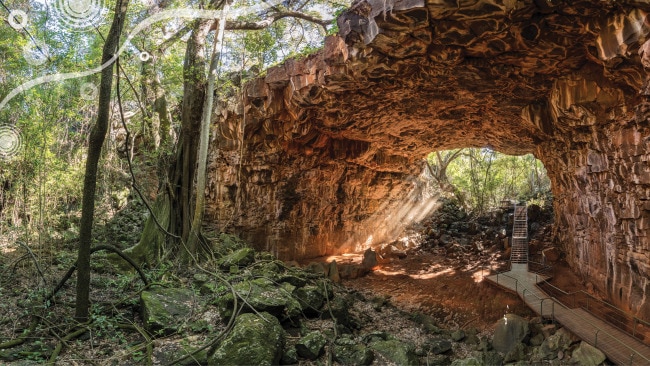Take the plunge
THE way to approach home ownership is with planning, thought and cutting the process into bite-sized chunks.

It can seem a daunting and mystifying undertaking, buying your first home. But like any worthwhile project, the way to approach home ownership is with planning, thought and cutting the process into bite-sized chunks.
Rather than leap head-first into the biggest financial commitment of your life because you’ve fallen in love with a funky apartment or cute cottage, slow down, investigate the options and take each step with your eyes wide open.
Keep a cool head, seek advice and think in terms of years or decades. What are the options if your income stops for a time because of illness or redundancy? How would you handle an interest rate rise, unexpected maintenance bills, an addition to the family or a relationship breakdown? How will your lifestyle change? We’ve helped you get started with a few of the crucial questions.
I’m thinking of buying my first home soon. What steps should I take now?
Start planning. Figure out what you can comfortably afford – with wriggle room for emergencies – and what you’re seeking in a property. Examine your income, outgoings and past spending habits.
Finance expert Noel Whittaker recommends figuring out your price bracket first; this will point you towards attainable suburbs and housing types.
“You do that by going to a lender or a mortgage broker who will take your details and work out how much you can afford,” Whittaker says. “There’s no point getting excited about a house in, say, Bulimba if you can’t afford that suburb.”
Do your own research by running your income and outgoings through an online calculator such as those found in Suncorp’s Home Buying Guide.
Consider the type of real estate you’re after and be clear about your reasons. Are you investing for financial growth or security? Is it for lifestyle or a relationship? Is it to gain a toehold in a desired market? Keep an eye on sales, attend open houses and talk to agents. Ask questions and determine what you’re prepared to pay for and what you can live without.
When you’re ready, get pre-approval on a home loan so you can move decisively when a suitable property comes up.
How much will I need as a deposit?
If you’re an owner occupier, you can borrow up to 95 per cent of the purchase price, but if you can come up with a 20 per cent deposit, you can avoid lender’s mortgage insurance. Of course, the more expensive the property, the more you’ll need to deposit.
Whittaker advises young people with little or no savings to consider a lifestyle change in order to build up a decent sum quickly.
“Go back and live with your parents for a couple of years and save for a deposit,” Whittaker advises. “You can probably save $50,000 by doing that.”
If you can manage to make a large deposit, the loan will cost you less over its lifetime.
“If you were a couple (each) earning $850 a week after tax you could decide to live on one income and bank the other $850 a week into a savings account,” Whittaker says. “In just twelve months you would have $45,000 which would be an adequate deposit for most properties. As your savings grow the success pattern you are forming will be reinforced.”
Many banks will also allow owner-occupiers to use the equity in a family member’s home to borrow up to 110per cent of the value of their own home. This also allows you to avoid Lender’s Mortgage Insurance.
What costs will I be up for?
If you are borrowing more than 80 per cent, you’ll need to pay lender’s mortgage insurance – but be aware that this protects the lender, not the borrower.
You’ll also be up for stamp duty and other government fees or taxes, building and pest inspections, solicitor or conveyancing fees and so on.
Stamp duty is easily calculable but varies from state to state. Exemptions and concessions are available, so do your calculations carefully using an online stamp duty calculator. Don’t forget insurance for your new home.
Can I get financial help?
Yes. If this is your first home, apply for the First Home Buyer’s Grant and stamp duty concessions.
The grant is available Australia-wide as a one-off sum for eligible first home buyers. In Queensland you can receive up to $20,000 on a new home valued up to $750,000. Other states offer sums ranging from $7000 (Tasmania) to $26,000 (Northern Territory). In most states this grant is offered for new homes, substantial renovations or new builds only. First home owner-occupiers receive stamp duty exemptions or concessions in most states, subject to the value of the home.
What sort of home loan is best?
That depends on you; there’s a loan to suit everyone. But remember that you’ll be living with this for a long time – perhaps decades – so choose carefully.
So, fixed rate or variable? That’s the first question and there is no right answer for everyone.
A fixed interest rate loan is predictable. Once you’ve accepted the rate you know exactly how much your monthly repayments will be and won’t have to worry about interest rate rises. Many people find this “no-surprises” option stable and reassuring. Conversely, you won’t benefit if interest rates drop, you may have to pay fees to make any changes and you generally can’t make extra payments should you come into some money.
A variable loan means that your interest rate, and therefore repayment amounts, will rise and fall with the market. You can also make extra payments whenever you like. However, you will be up for higher repayments if interest rates trend upward. Living with this uncertainty can cause some people anxiety and make it difficult to budget.
You can hedge your bets by splitting your home loan into two – one with a fixed rate and the other variable. Your repayments remain relatively steady, but the variable portion allows you to take advantage of positive changes in your life.
Once you’ve made this decision, go online or speak to a home loan specialist to determine which loan is right for your circumstances.
Do I need a lot of documents to apply?
You’ll need a certain basic checklist:
- personal identification
- proof of residence (a rates notice in your name, a rent receipt or tenancy agreement, current home loan statement or a written statement confirming that you are boarding)
- proof of current liabilities (credit card, charge card and personal loan statements)
- proof of savings (savings accounts, term deposits and/or managed fund statements)
All must be current and original or certified copies. Different lenders and loans will require various levels of documentation.
Good luck!
Originally published as Take the plunge


